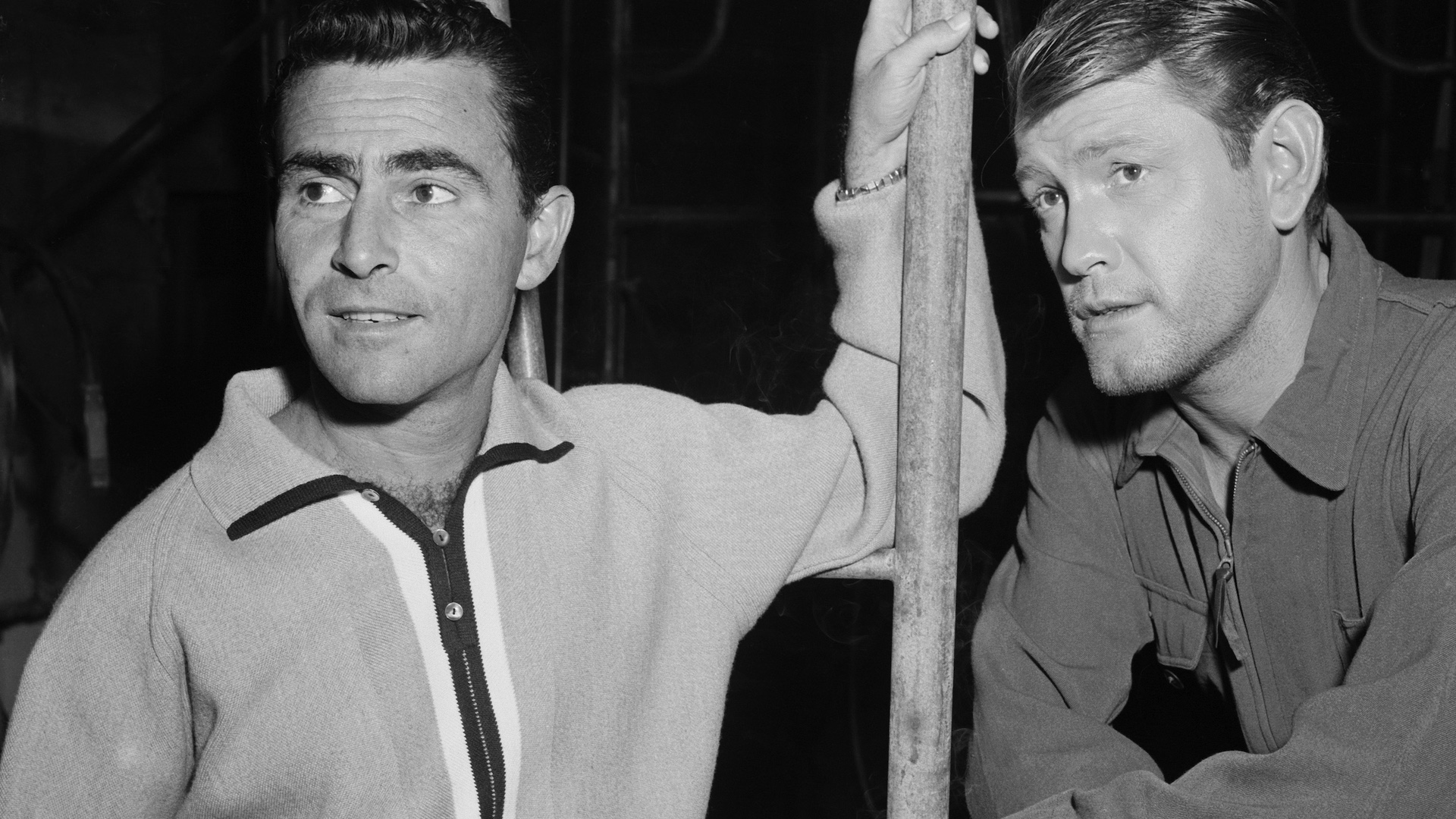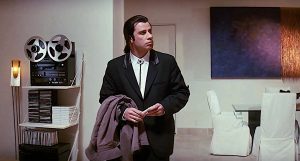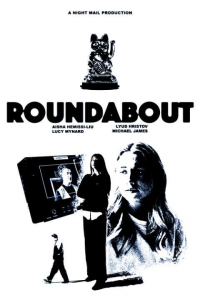
The following is a guest essay from pop culture historian Arlen Schumer (writer/designer, The Silver Age of Comic Book Art) and is featured in his book The Five Themes of The Twilight Zone, a collection of incisive essays on the most classic episodes of the show.
“The place is here…the time is now…and the journey into the shadows that we’re about to watch could be our journey…” — The first words spoken by Rod Serling at the beginning of The Twilight Zone’s first episode not only introduced the concept to an unsuspecting 1959 television audience, but ushered them into what would become “the Sixties,” a question of identity for America itself.
In “Where is Everybody?” an amnesiac played by Earl Holliman wanders upon a strangely deserted California town and decries, “I’ve looked and I haven’t seen anybody around…maybe they’re all asleep or something, but literally, there hasn’t been a soul,” Serling himself observing the sleeping giant that was America in the Cold War conformity of the Eisenhower Fifties?
Holliman’s character turns out to be “Mike Ferris,” an astronaut in training (torn from the day’s headlines, following the April ’59 naming of the Mercury Seven astronauts by NASA) who, following 484 hours in an isolation tank to prepare him for solo space travel to the moon (three years before JFK’s famous “…by the end of this decade” moon speech at Rice University), cracked from loneliness and began to hallucinate what we, the audience, thought was the “reality” of the episode. The first Twilight Zone twist ending and still one of its metaphysically best, its narrative structure upended the tacit agreement between storyteller and audience that what we’re being shown is the “real” reality.
One of only two Twilight Zone episodes directed by Robert Stevens, a veteran television director (he directed 44 episodes of Alfred Hitchcock Presents)—the other being the fifth episode of the first season, the immortal “Walking Distance”—who should be considered one of the series greatest directors, because he would nevertheless set the graphic, tightly-framed and fluid camera style and singular black and white look, with a full range of grey tones, of The Twilight Zone, that’s the equivalent of film noir on television. He even chose the great film noir cinematographer Joseph LaShelle, who won an Academy Award for his work on one of the most famous noirs, 1944’s Laura, to lens “Where is Everybody?” (Longtime Twilight Zone Director of Photography George T. Clemens came on board with the second episode, and would win an Emmy in 1961 for his work on the series.)
And the moody, multilayered original score for the episode, by the esteemed Bernard Herrmann (whose film soundtrack career debuted in 1941 with Citizen Kane, and continued as Hitchcock’s favorite composer for his greatest films, while continuing to score Twilight Zone episodes throughout its five-season run), would also raise the bar high for the stream of great soundtrack composers who would follow Herrmann into The Twilight Zone, including future Oscar winners Jerry Goldsmith and Leonard Rosenman.
The final scene of the first half of the episode combines all the aforementioned elements into a stunning sequence that director Stevens orchestrates to perfection: Ferris staggers out of the deserted town’s police station after his unnerving experience inside its jail cells, and begins to run towards the camera, which follows his zig-zagged path, echoed by Herrmann’s quirky score, until Ferris’s face is full-framed as he breaks the fourth wall by looking directly into the camera and yelling out a very meta, “Where is everybody?!?!”
Gearing up to the climax of the episode, Ferris comes running down a movie theater’s staircase, and Stevens plays with our sense of perspective by having him run right into his reflection in a mirrored wall, shattering it, and our equilibrium, too. Bursting out of the theater into the neon-lit night, a frazzled Ferris runs distraughtly through the lamplit streets, and LaShelle’s moving camera seems to hover above him as he runs haphazardly, heightening his sense of dislocation from the reality of his living nightmare.
Ending on a Dutch angle of Ferris desperately pressing the button on a traffic post over and over as he repeatedly pleads for “somebody” to help him, Ferris becomes the first of many Twilight Zone characters who would come just short of praying to God to rescue them from their dire Twilight Zone dilemmas. And then Stevens shocks us with a jarring jump cut to a darkened screening room lit only by the conical white beam of the film projector (that rivals Orson Welles’ similar startling cut to the “News on the March” newsreel footage in the first act of Kane), highlighting the faces of the military men calmly monitoring astronaut Ferris’ delusional ordeal in the isolation tank on closed-circuit television. Minds blown in 1959, and ever since.
A true pilot episode, and perhaps the greatest in the history of television, in that it included virtually all the existential and surreal motifs that would become associated with The Twilight Zone to come—isolation, fear of the unknown, confusion with mannequins, hallucinogenic delusions that seem all too real—“Where is Everybody?” is finally a harrowing visualization of one man’s alienation from reality, indeed from one’s self, which would prove to be the defining, existential crisis facing man in the second half of the 20th Century, a time when “the pit of man’s fears and the summit of his knowledge”—the atomic bomb—first coexisted.
With a Foreword by Serling’s daughter, author Anne Serling, The Five Themes of The Twilight Zone is organized into five themes that best represent the depth and breadth of The Twilight Zone: Science and Superstition, Suburban Nightmares, A Question of Identity, Obsolete Man, and The Time Element. The equally expansive essays are as entertaining as they are enlightening, while Schumer’s handsome design beautifully mirrors the black and white television aesthetic of The Twilight Zone itself. For a hardcover copy of The Five Themes of The Twilight Zone signed by Arlen Schumer, please visit: bit.ly/47LDwdI. For tickets to Arlen’s upcoming New York City screening and book signing on October 27, check out: bit.ly/3MUMQ5k.
The post Where Is Everybody? The Twilight Zone’s First Episode Tackled Atomic Anxieties appeared first on Den of Geek.








